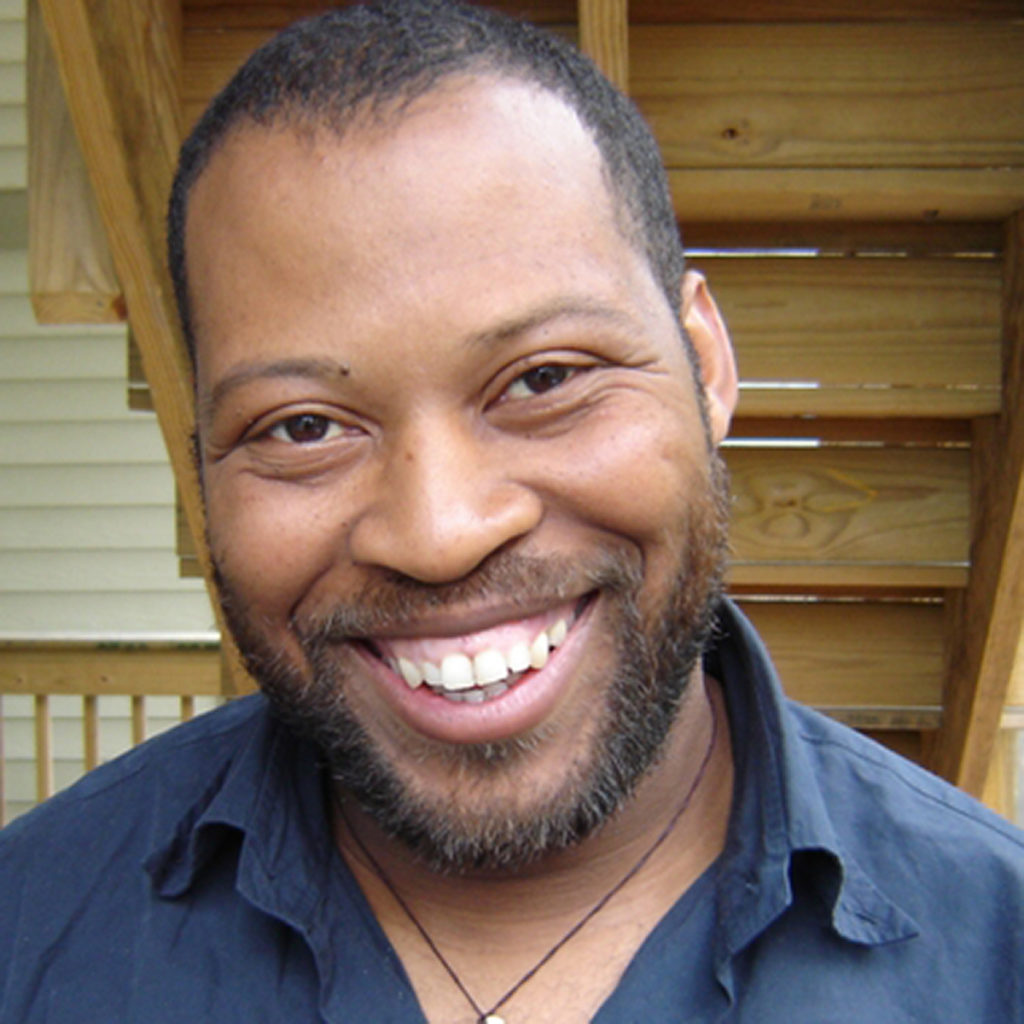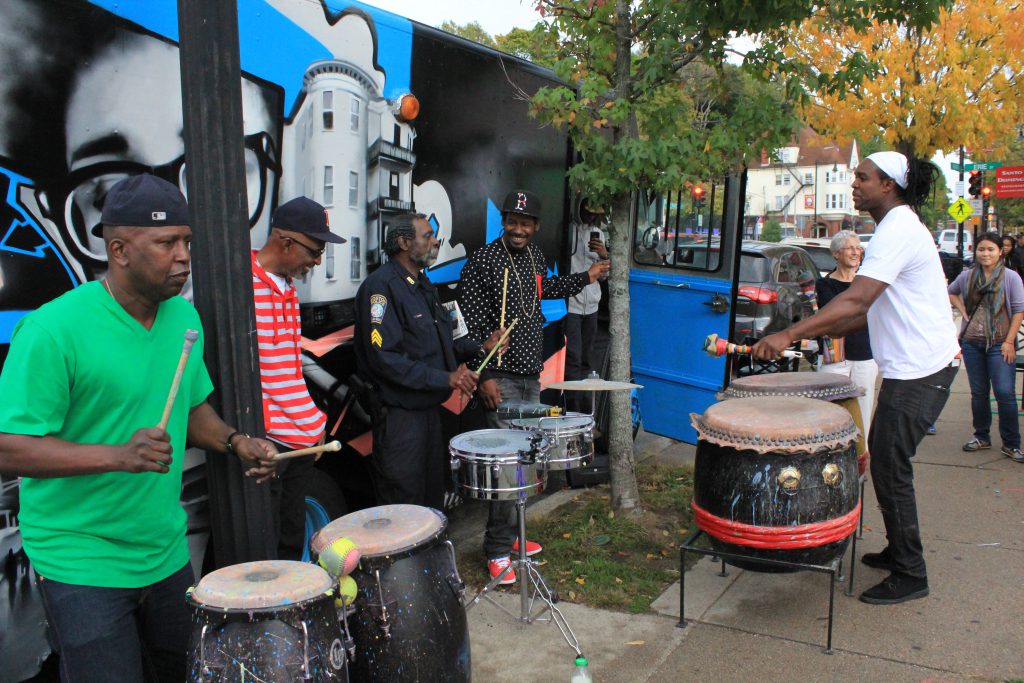Design Studio for Social Intervention uses design to change the way social justice is imagined
Kenneth Bailey is one of the founders of Boston’s Design Studio for Social Intervention (DS4SI), an artistic organization that uses design to change how social justice is imagined, developed, and deployed.
Around 2003, Bailey found himself concerned about what he saw as a “crisis of imagination in the civil society sector.”
“A lot of the solutions that had become seen sort of as the conventional default for addressing social problems were overused and needed updating,” he explains. “But I didn’t know what to do about that. I saw the problem but I didn’t know what to do with it.”
At the time he was doing a mid-career fellowship at the Department of Urban Studies and Planning at MIT. He had been working as a consultant in community organization and organizational development, helping leaders of community-based organizations understand how to lead their organizations in conflict. A colleague at MIT who worked in design asked Bailey if there were any design studios in his line of work.
“What you’re talking about is the kind of work design studios do’ he said to me,” Bailey recounts. “‘Design studios help industries with imagination and creating new forms.'”
It was out of those conversations that eventually led to the launch of consulting outfit DS4SI in 2006, developed with the goal of helping the civil society sector be more inventive and creative. Their work includes creative placemaking, civic engagement, interventions, creativity labs, writings, and events.

“Design is a rare sort of an interrogation of form and it is all about tinkering and bricolage to come up with new forms,” Bailey says. “So much of where see new ways of framing problems that communities are often facing exist within the realm of culture where artists typically play, and artists also understand form and gesture and how to communicate in ways where you aren’t being didactic, but more playful and suggestive. All of these different capacities are critical for coming up with new ways to address social problems.”
DS4SI is a national organization that works with a vast network of organizational partners and clients, like Transportation for America and the Women’s Resource Center.
But is in their home base of Boston, though, where DS4SI has undertaken the most projects, working with organizations like the Interaction Institute for Social Change, Massachusetts Smart Growth Alliance, the Boston Transportation Department, the Dudley Street Neighborhood Initiative, and the Fairmont/Indigo Line CDC Collaborative.
With the Fairmont/Indigo Line CDC Collaborative, DS4SI was contracted to assist in transforming the Fairmont Commuter Rail Line transport corridor into a cultural district and a coherent sort of neighborhood. Right now, Bailey says, the different neighborhoods along this corridor are disjointed, functioning separately instead of collectively.
“We’re trying to help this corridor think about their collective power and think of themselves in this shared destiny in that they share this train line and how that might impact their future amidst the changes in this city,” he says.

They supported five artists in residence who spent 15 months designing opportunities for residents and youth, business owners, and other creative practitioners to reimagine public spaces, public forms of community expression, and social interventions that increased vibrancy and community connectedness along the corridor.
Four were embedded within communities along the corridor while the fifth, the “Artist in Transit,” worked at bus stops. Each of these artists in residence was hosted by a coalition of local organizations including the Dudley Street Neighborhood Initiative and Four Corners Main Street.
Creative placemaking projects developed by the artists along this corridor were an effort to get the public involved in rethinking and retaking public spaces.
Light Up the Bridge transformed a dark, foreboding commuter rail overpass into a brightly-lit safe space that challenged the negative perception of the commuter rail and of the perceived danger of the area. The Imaginary Tea Stop was a tool of civic engagement to get people interacting at a refreshment stand that encouraged dialogue and idea-sharing.
Other projects DS4SI has overseen in the area include Making Planning Processes Public in Upham’s Corner, an area undergoing major planning transformations, where DS4SI led efforts to create an urban installation based around all of the different planning opportunities that were happening on that particular side of city so that people in the neighborhood could participate in the planning process in ways that were casual and easy, just by walking by.
“It was different than the typical modality of participating where it means going to a meeting,” explains Bailey. “We made the modality more like an exhibit where people could just pop in and still enjoy an exhibit where they can hang out with their kids.”
He says they also host projects that are more “prefigurative,” proposing new futures or introducing new products into the future to help people imagine how society should be arranged.
One such project was Public Kitchen, a research and development project that asked, “If kitchens were public places like libraries or schools, how would it change social life?” It aimed at problematizing the degradation and privatization of all things public – schools, parks, water, hospitals – and went in the opposite direction, raising awareness of how making things like kitchen public can increase access to affordable nutritious foods and vibrant social communities.
“We’re not just by fighting against things that are going wrong, but proposing things we want to see in society and making those things happen with artists and designers.”
Go Boston 2030 was a similar future-envisioning creativity lab in which people from all walks of life came together to co-envision the future of Boston’s transportation experience through a large-scale interactive installation.
“A big chunk of this is what we consider aesthetic thinking is the way artists see the world,” says Bailey. “A lot of the strategies to address problems would benefit a lot from what artists understand from conceptual art and choreography and performance. Just seeing how those worlds think and perceive proceed, if we could marry those procedures to ‘normal’ society we might get some hybrid thinking that would point us in new directions, bringing those two ways of understanding the world together with people who are trying to create a better world.”
